Water damage is one of the most common problems that homeowners face. In many cases, water can enter through cracks in the door, causing extensive damage to floors and walls. If you’re experiencing this problem, don’t worry – we have a definitive guide on how to stop water from coming under the door! In this article, we will discuss some of the most common causes of water infiltration, as well as some tips on how to prevent it.
Why is water coming in under the door threshold?
One of the most common causes of water infiltration is a door that is not properly sealed. If there are gaps around the door, water can easily enter through these openings. In some cases, weatherstripping or caulking can be used to seal these gaps. However, if the problem is more severe, it may be necessary to replace the door entirely.
Finally, water can also enter your home through cracks in the foundation. These cracks can be caused by a variety of factors, including settlement, poor construction, and even earthquakes. If you suspect that your home has foundation problems, it is important to have it inspected by a qualified professional. [1]
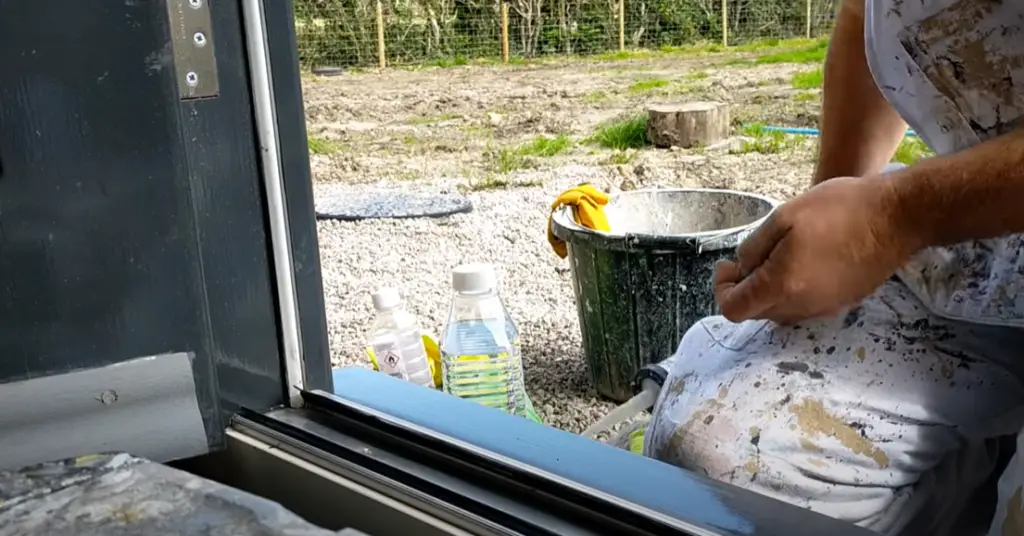
How to Stop Water from Coming in Under the Door
Now that we’ve discussed some of the most common causes of water infiltration, let’s talk about how to prevent it. One of the best ways to keep water from coming in under the door is to make sure that it is properly sealed. This can be done by weatherstripping or caulking around the door. If you’re not sure how to do this, there are plenty of resources available online or at your local hardware store.
Another way to prevent water from coming into your home is to make sure that your gutters and downspouts are clean and free of debris. Regularly cleaning your gutters will help ensure that they are functioning properly and will help prevent rainwater from pooling around your foundation.
Finally, if you have cracks in your foundation, it is important to have them repaired as soon as possible. Foundation repairs can be tricky, so it is best to hire a qualified professional to handle this for you.
Replace your Door Threshold
If you’ve tried all of the above methods and you’re still having problems with water infiltration, it may be time to replace your door threshold. A new door threshold can provide a better seal and help prevent water from coming in under the door.
Water damage is a serious problem that can cause extensive damage to your home. If you’re experiencing this problem, don’t hesitate to take action and implement the tips we’ve discussed in this article. By taking these steps, you can help prevent water damage and keep your home in top condition. [2]
Gather the Tools Needed
- Tape measure
- Cordless drill
- Phillips screwdriver bit
- Pry bar
- Safety glasses
- Hearing protection
- Replacement door threshold
- Caulk gun
- Tube of caulk
Before you begin, it’s important to gather all the tools you’ll need for the job. This will make the process go much smoother and help you avoid having to take multiple trips to the hardware store. Once you have everything you need, follow the instructions below to replace your door threshold. [3]
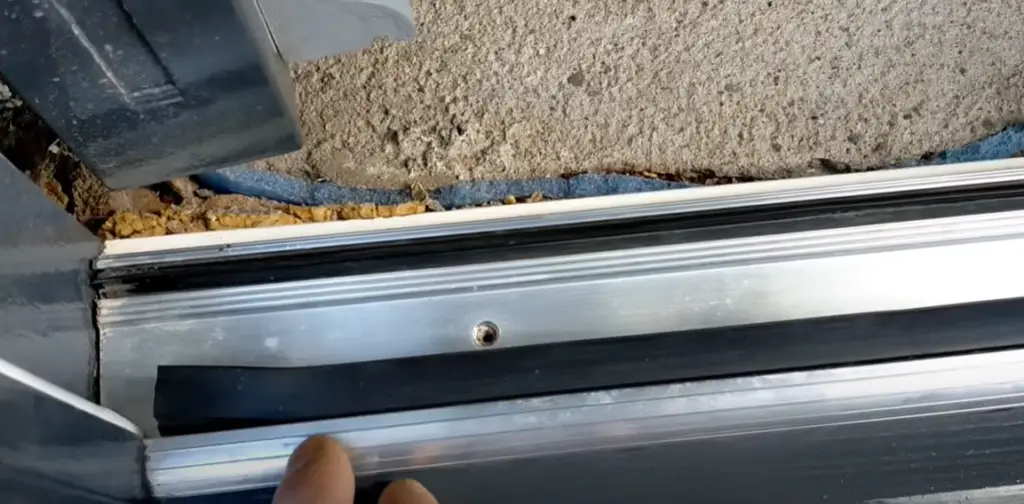
Prep the Area
- Use a tape measure to measure the width of your door.
- Measure from the outside of one jamb to the other.
- Write down this measurement so you can use it to purchase the correct size threshold.
- The next step is to remove any nails or screws attaching the old threshold.
- If necessary, use a pry bar to gently loosen the old threshold.
- Carefully remove it from the door opening, when it is loose.
Before you can install the new threshold, you’ll need to prep the area by removing the old one. To do this, start by measuring the width of your door and writing down this measurement. Then, use a screwdriver or pry bar to remove any nails or screws that are holding the old threshold in place. Once it is loose, carefully remove it from the door opening.
Once the old threshold has been removed, use a vacuum or broom to clean up any debris that’s left behind. This will help ensure that the new threshold will have a good seal.
Remove the Old Threshold
The first step is to remove the old threshold. You will need a screwdriver and a hammer for this task. Unscrew the screws that are holding the threshold in place. Once the screws are removed, you can gently tap on the threshold with the hammer until it comes loose. If your threshold is glued down, you may need to use a putty knife to loosen it up before tapping it with the hammer.
Once the old threshold is removed, you should clean up any old glue or sealant that is left behind. Use a putty knife or scraper to remove any remnants of the old adhesive. Once everything is clean, you can proceed to the next step.
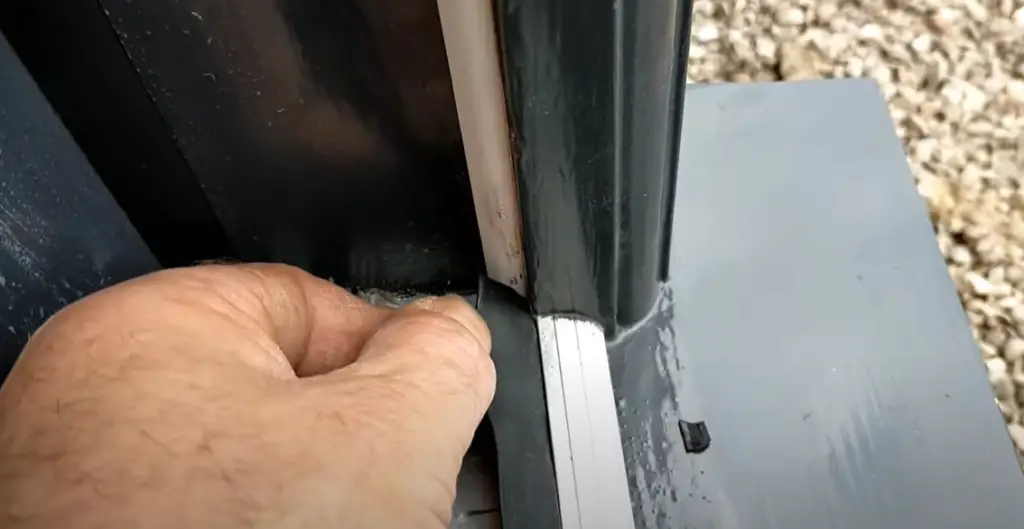
Create Pilot Holes
The next step is to create pilot holes for the new threshold. You will need a drill and a Phillips screwdriver bit for this task. Measure the width of your door and mark where you will need to drill the holes. Drill two pilot holes on each side of the door, making sure that they are evenly spaced.
Once you have drilled the pilot holes, insert the screws that came with your new threshold. Tighten them until they are snug, but be careful not to over tighten them or strip the threads.
If your new threshold did not come with screws, you can purchase some at your local hardware store. Make sure to get screws that are long enough to go through both the threshold and the door jamb so that they can be properly secured.
Now that the pilot holes are drilled and the screws are in place, you can move on to the next step.
Apply Sealant/Caulking
The final step is to apply sealant or caulking around the perimeter of the new threshold. This will help create a watertight seal and prevent water from seeping in under the door.
Once you have applied the caulk, allow it to dry for 24 hours before opening or closing the door. This will give the caulk time to set and create a strong seal.
After the caulk has dried, you can test it by spraying water on the threshold and door. If there are any leaks, you may need to reapply the caulk or replace the threshold.
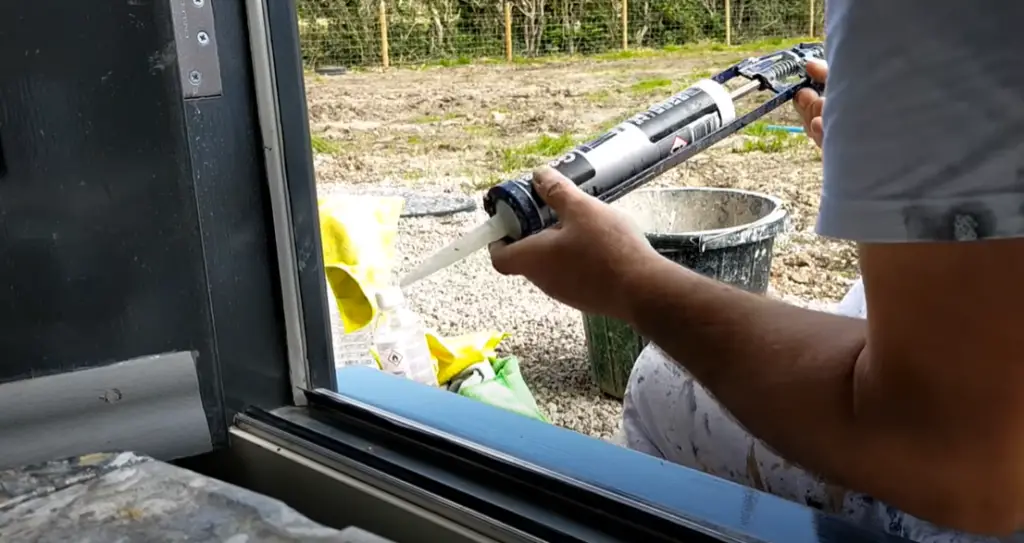
Install the threshold Plate
The next step is to install the threshold plate. The threshold plate is what the door will sit on when it is closed. It helps to seal the gap between the bottom of the door and the floor.
To install the threshold plate, start by measuring the width of your door. Then, cut the threshold plate to size using a saw. Once it is cut to size, apply a bead of caulk around the perimeter of the plate. Be sure to fill in any gaps between the plate and the door jamb.
After you have applied a bead of caulk, set the plate in place and use screws to secure it to the door jamb. Make sure that you do not over tighten the screws or strip them.
Once the threshold plate is installed, you can move on to the next step.
Apply a bead of sealant or caulking around the perimeter of the new threshold. Apply a coat of primer to the area where the threshold meets the door. This will ensure that water does not seep into the space under the door. A caulking gun and caulk are required for this operation.
Apply Final Coats of Sealant
It is important to apply a final coat of sealant to keep your door watertight. You can use a brush, roller, or sprayer to apply the sealant. Make sure to follow the manufacturer’s instructions for application and drying times. Once the final coat of sealant has dried, you can close your door and test it out by running water over the threshold. If there are still leaks, you may need to reapply the sealant or add additional weatherstripping.
Install Weatherstripping
If you live in an area with extreme weather conditions, you may want to install weatherstripping around your door. Weatherstripping is a seal that helps prevent air and water from entering your home. You can purchase weatherstripping at most hardware stores. Make sure to measure the door before purchasing the weatherstripping so that you get the correct size.
Installing weatherstripping is relatively easy. First, you will need to clean the surface around the door so that the adhesive can adhere properly. Next, remove the backing from the adhesive and apply it to the door frame. Press down on the weatherstripping to make sure it is attached securely. You may need to use a utility knife to trim off any excess weatherstripping.
Once you have installed the weatherstripping, close the door and test it out by running water over the threshold. If water is still seeping in, either more sealant or weatherstripping may be necessary. [4]
Can you waterproof a door bottom?
Yes, there are products you can use to waterproof your door bottom. These products typically come in the form of a sealant or a weatherstrip.
To apply a sealant, you will first need to clean the area around your door bottom. Next, apply the sealant to the door bottom using a brush or a roller. Be sure to follow the manufacturer’s instructions for the best results.
A weatherstrip is another common way to prevent water from coming under the door. Weatherstripping is applied along the sides and top of your door to create a tight seal. This seal helps block out drafts and moisture.
Installing weatherstripping is generally an easy do-it-yourself project. However, if you are unsure about how to install weatherstripping, you can always hire a professional.
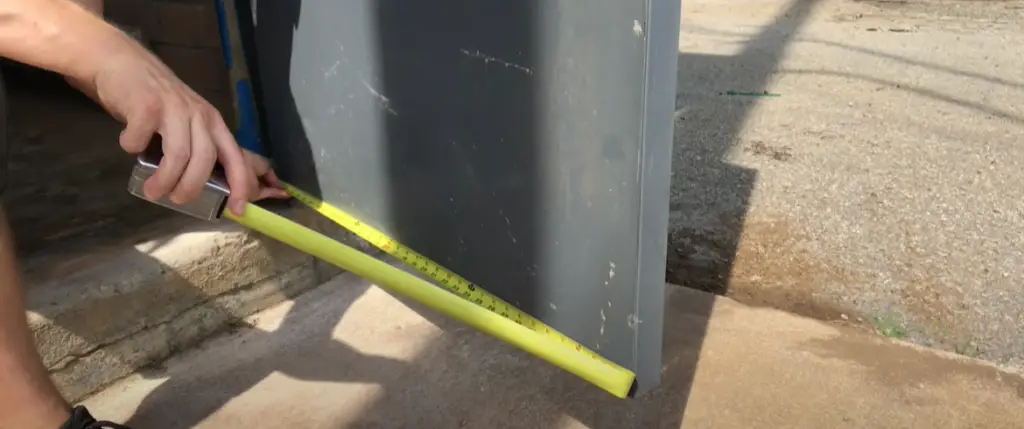
Does sealing an exterior threshold prevent storm water?
Yes, sealing an exterior threshold can help prevent storm water from entering your home. However, it is important to note that sealing an exterior threshold is not a cure-all solution. In some cases, you may also need to install a drainage system to keep storm water away from your home.
If you are unsure about whether or not sealing an exterior threshold is right for you, be sure to talk to a professional. They will be able to assess your needs and recommend the best course of action.
While installing weatherstripping or a sealant around your door bottom can help prevent water from coming under the door, there are other things you can do to waterproof your home. One of the best ways to protect your home from water damage is to install a sump pump.
A sump pump is a device that is installed in the lowest point of your home. The sump pump helps to remove water that has accumulated in this area. This can help to prevent flooding and water damage.
By taking these simple steps, you can help waterproof your home and prevent water damage. By following this definitive guide, you will be well on your way to keeping your home dry and comfortable all year long! [5]
FAQ
Why do wooden doors swell in the rainy season?
Wooden doors swell in the rainy season because they are made of absorbent material. When it rains, the wooden door absorbs moisture from the air and this causes the door to swell.
To prevent your wooden door from swelling, you can try one of two things. First, you can apply a sealant to your door. This will help to waterproof your door and prevent moisture from seeping in.
Another option is to install a humidity control system in your home. This system will help to regulate the amount of moisture in the air, which can help to prevent your door from swelling.
If you have any further questions about how to stop water from coming under your door, be sure to talk to a professional. They will be able to expertly assess your needs and recommend the best solution for you. [6]
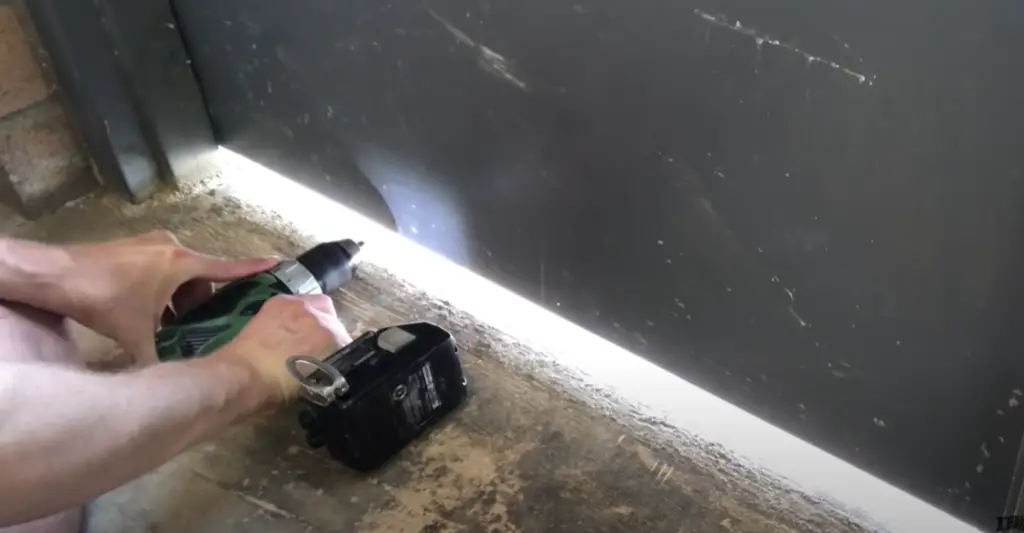
Does heat make wood shrink?
Yes, heat can make wood shrink. When wood is heated, the molecules in the wood expand. This expansion causes the wood to swell. However, when the wood cools, the molecules contract and this causes the wood to shrink.
Wooden doors can be particularly susceptible to shrinking and swelling due to temperature changes. If you live in an area with extreme temperatures, you may want to consider installing a door that is made of a material that is not as affected by changes in temperature.
How do sandbags work to stop flooding?
Sandbags work to stop flooding by creating a barrier between the floodwaters and your home. When the sandbags are placed around your home, they help to keep the water from seeping in and causing damage.
If you live in an area that is susceptible to flooding, it is a good idea to have a supply of sandbags on hand. That way, if a flood does occur, you will be prepared and can take action quickly.
Sandbags can be purchased at most hardware stores. Be sure to follow the manufacturer’s instructions on how to properly fill and place the sandbags.
What should you put under the door threshold?
You can use a door sweep or a door seal to help prevent water from coming under your door. Door sweeps are strips of material that you attach to the bottom of your door, and they help to create a seal between the door and the floor. Door seals are similar to door sweeps, but they attach to the sides of your doors instead of the bottom. Both door sweeps and door seals can be found at most hardware stores.
If you live in an area where it rains frequently, you may want to consider installing a French drain around your home. French drains are trenches that are filled with gravel or rocks, and they help to redirect water away from your home. This can be a big project, so you may want to hire a professional to install a French drain for you.
You can also help to prevent water from coming under your door by making sure that your gutters and downspouts are clear of debris. If your gutters are full of leaves and other debris, they won’t be able to properly channel water away from your home. As a result, water could pool around your foundation and eventually make its way into your basement or crawl space. Cleaning out your gutters regularly is one of the best ways to prevent water damage to your home.
If you live in an area that is prone to flooding, you may want to consider installing a sump pump in your basement or crawl space. Sump pumps help to pump water out of your home and away from your foundation, which can help to prevent serious water damage.
No matter what measures you take to prevent water from coming under your door, it’s always a good idea to have a plan in place in case of an emergency. Make sure that you know where your main water shut-off valve is located, and make sure that everyone in your family knows how to turn it off. You should also have a backup sump pump or generator in case your primary sump pump fails. By taking these precautions, you can help to protect your home from the devastating effects of flooding. [7]
Useful Video: Front Door Leaking Water Every Time That It Rains Home Repair Video
Conclusion
While there are many potential solutions to this common household problem, some methods are more effective than others. By following the advice in this article, you can stop water from coming under the door and keep your home dry and comfortable. Have you tried any of these techniques? What has worked best for you? Let us know in the comments below!
References:
- https://bobsfinish.com/water-coming-in-under-door/
- https://www.thisoldhouse.com/doors/21016612/how-to-replace-a-threshold
- https://www.bhg.com/home-improvement/door/door-repair/how-to-replace-a-door-sill-and-threshold/
- https://www.familyhandyman.com/project/door-weather-stripping/
- https://bobsfinish.com/water-coming-in-under-door/
- https://www.vedantu.com/question-answer/wooden-doors-swell-up-and-get-stuck-during-rainy-class-11-biology-cbse-5fa0db5cdb613624446c5da4
- https://hvacseer.com/seal-exterior-door-threshold/

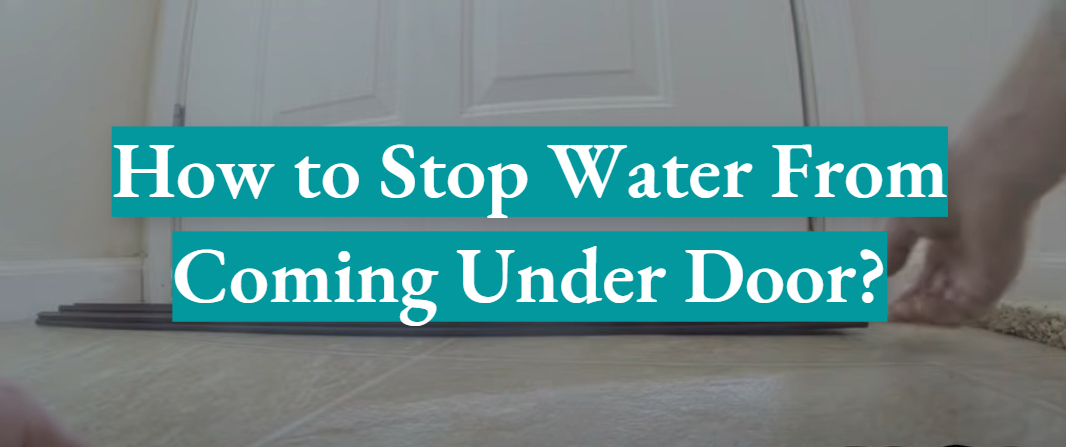




Leave a Reply